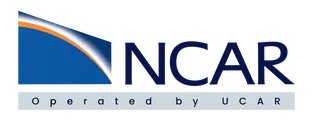Is it possible to quantify irrigation water‐use by assimilating a high‐resolution satellite soil moisture product?
To Access Resource:
Questions? Email Resource Support Contact:
-
opensky@ucar.edu
UCAR/NCAR - Library
| Resource Type | publication |
|---|---|
| Temporal Range Begin | N/A |
| Temporal Range End | N/A |
| Temporal Resolution | N/A |
| Bounding Box North Lat | N/A |
| Bounding Box South Lat | N/A |
| Bounding Box West Long | N/A |
| Bounding Box East Long | N/A |
| Spatial Representation | N/A |
| Spatial Resolution | N/A |
| Related Links | N/A |
| Additional Information | N/A |
| Resource Format |
PDF |
| Standardized Resource Format |
PDF |
| Asset Size | N/A |
| Legal Constraints |
Copyright 2023 American Geophysical Union. |
| Access Constraints |
None |
| Software Implementation Language | N/A |
| Resource Support Name | N/A |
|---|---|
| Resource Support Email | opensky@ucar.edu |
| Resource Support Organization | UCAR/NCAR - Library |
| Distributor | N/A |
| Metadata Contact Name | N/A |
| Metadata Contact Email | opensky@ucar.edu |
| Metadata Contact Organization | UCAR/NCAR - Library |
| Author |
Jalilvand, Ehsan Abolafia‐Rosenzweig, Ronnie Tajrishy, Masoud Kumar, Sujay V. |
|---|---|
| Publisher |
UCAR/NCAR - Library |
| Publication Date | 2023-04-01T00:00:00 |
| Digital Object Identifier (DOI) | Not Assigned |
| Alternate Identifier | N/A |
| Resource Version | N/A |
| Topic Category |
geoscientificInformation |
| Progress | N/A |
| Metadata Date | 2023-08-18T18:20:30.285975 |
| Metadata Record Identifier | edu.ucar.opensky::articles:26276 |
| Metadata Language | eng; USA |
| Suggested Citation | Jalilvand, Ehsan, Abolafia‐Rosenzweig, Ronnie, Tajrishy, Masoud, Kumar, Sujay V., Mohammadi, Mohammad Reza, Das, Narendra N.. (2023). Is it possible to quantify irrigation water‐use by assimilating a high‐resolution satellite soil moisture product?. UCAR/NCAR - Library. http://n2t.net/ark:/85065/d75b06ff. Accessed 04 April 2025. |
Harvest Source
- ISO-19139 ISO-19139 Metadata

